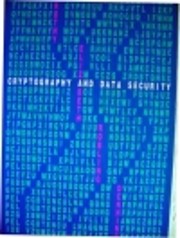

Auf ein Miniaturbild klicken, um zu Google Books zu gelangen.
|
Lädt ... Cryptography and Data Securityvon Dorothy Denning, Elizabeth Robling
 Keine Keine aktuelle Diskussion zu diesem Buch. keine Rezensionen | Rezension hinzufügen
Keine Bibliotheksbeschreibungen gefunden. |
Aktuelle DiskussionenKeineBeliebte Umschlagbilder
 Google Books — Lädt ... Google Books — Lädt ...GenresMelvil Decimal System (DDC)001.64Information Computer Science; Knowledge and Systems Knowledge [formerly : Data processing] [formerly : Electronic]Klassifikation der Library of Congress [LCC] (USA)BewertungDurchschnitt: (3.58) (3.58)
Bist das du?Werde ein LibraryThing-Autor. |
|||||||||||||||||||||||||||||||||||||||||||||||||||||||||||||||||||||||||||||||||||||||||||||||||||||||
Klassisk lærebog i kryptografi, men med 30 år på bagen. Enigma er nævnt kort på side 85 som opfundet af Arthur Scherbius og med en meget kort beskrivelse af virkemåden. (